I love my original Banana Pudding guitar. Since I finished it back in August of 2014, it has been my main Sunday morning guitar, where I have played it for at least 90% of the services. I love how it sounds, how it feels and how it looks. In fact, during the sermons sometimes I catch myself just admiring it as it sits in the stand. That's probably not very spiritual, is it? Don't tell the pastor.
So it stands to reason that I wondered if I could make a bass version of this guitar. Sometime around Thanksgiving of 2017 I decided to sketch out the body shape. I started by tracing my original template, then modifying it. I lengthened the upper horn to make it balance better with the long neck. By doing that, I had to tweak a few of the other dimensions slightly. I also changed the pickguard shape, just to make it unique for this instrument.
I didn't really need another bass, so my original intentions were to build it for the Tundra Boy to play in his high school show choir band. Because of this, I wanted it to feature the school colors (orange and black.) He also frequently uses dropped D tuning, so I wanted to give him a Hipshot bass extender to make it easy to switch back and forth. Finally, to give him a little flair during the concerts I thought it would be cool for the instrument to have LEDs in the fretboard.
Alas, before the instrument was completed the Tundra Boy was no longer involved in the high school show choir band, which is a long story that I'm not going to bother going into on the internet. So I wound up with a cool bass of my own. That's OK. You can never have too many musical instruments, right?
Here are the specifications of the bass:
Neck Type: Bolt on, 5 screws with recessed ferrules.
Neck Wood: Tiger Maple, laminated construction for stability
Truss Rod: Dual action
Reinforcement: Two carbon fiber rods
Headstock: Flat, Fender-style
Tuners: Three Wilkinson, one Hipshot with a Bass Xtender
Nut: Bone
Body Wood: Poplar
Fretboard: Tiger maple, 12" radius, LED dot inlays and side markers
Scale Length: 34"
Pickups: Aguilar Super Single soapbars
Controls: Two volume, one tone, push-pull on tone to turn on LEDs.
Hardware: Black. Hipshot KickAss bridge.
Finish: Nitrocellulose lacquer on body, satin poly on neck
Weight: Approximately 8.5 lbs
I'm really pleased with how the body color works with the black hardware, pickguard, and the light maple neck.

It doesn't show up well in the photos, but there is a forearm contour to make playing the instrument more comfortable.

This is a very bold looking, and sounding bass. It's definitely not what you want to play if you're looking to blend into the background.

There are two volume controls and a single shared tone control.
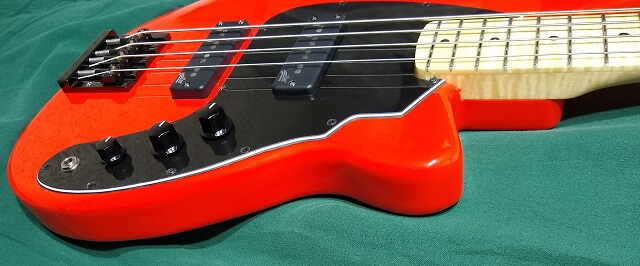
The Aguilar pickups are very powerful and have a pronounced midrange growl. It sounds like a Jazz Bass on steroids.
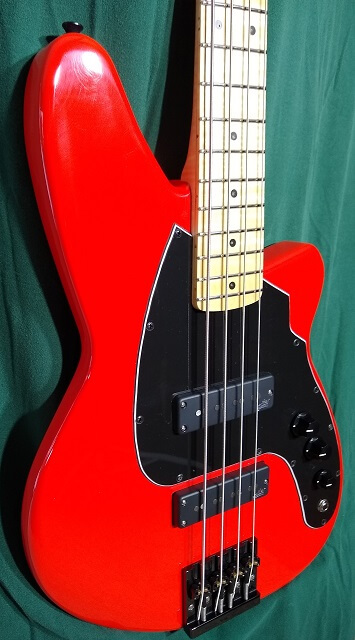
The bridge is a Hipshot KickAss, and the bass uses a 34" scale length.
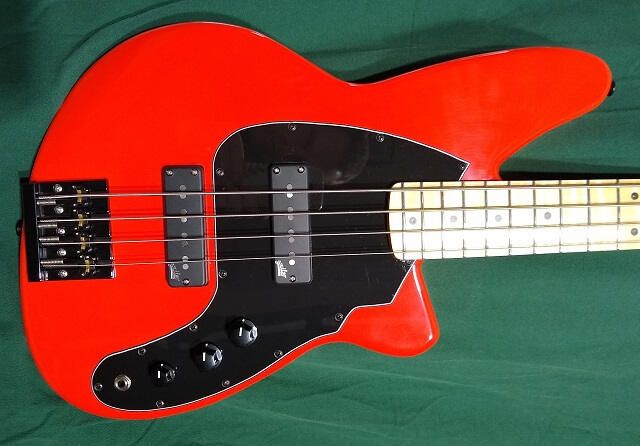
The LEDs are a lot brighter in person. The camera tends to wash them out.
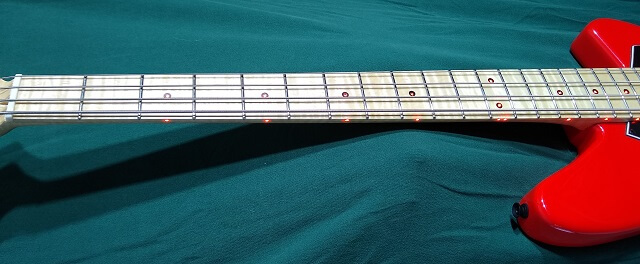
The LEDs are turned on by pulling "out" on the tone knob.
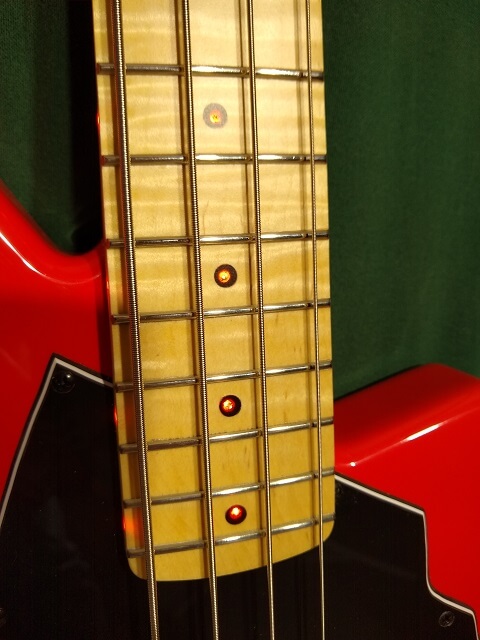
The headstock is a flat (recessed) style. The nut is made of bone.
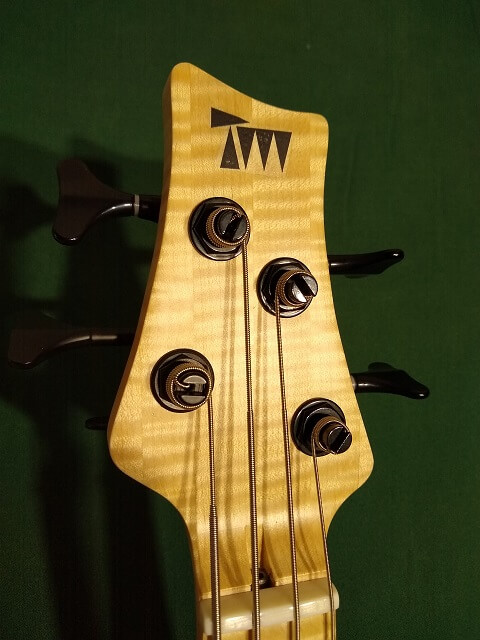
There are also LED side markers.
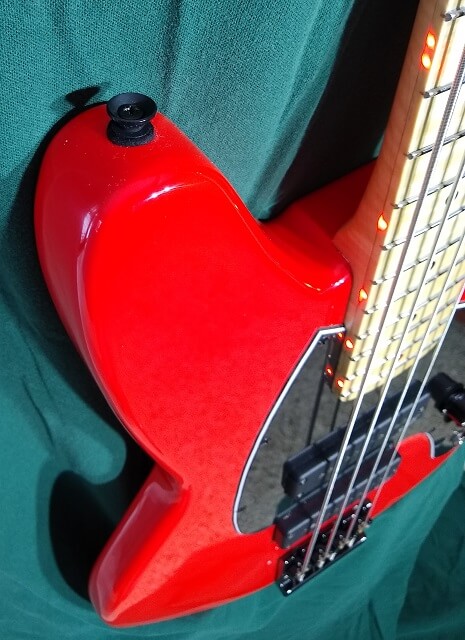
The long neck is very thin and comfortable.

The five bolt neck makes the neck very secure in the pocket.

It's hard to see it in the photos, but there is a belly contour to make playing the instrument more comfortable.

The Hipshot detuner on the low E string allows for a quick transition to "dropped D" tuning.
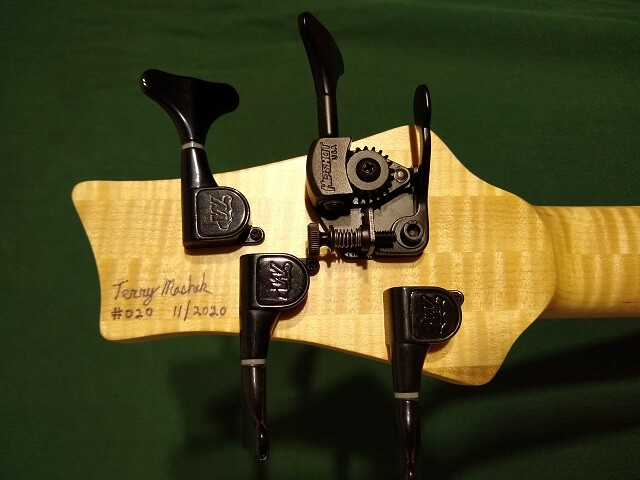
The neck is made up of four pieces of laminated tiger maple. The outer two laminates are from the same board, and the inner two laminates are also from the same board.
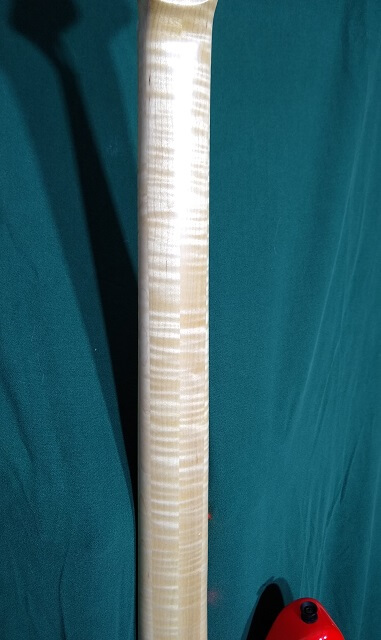
This cover hides the battery case that runs the LEDs.
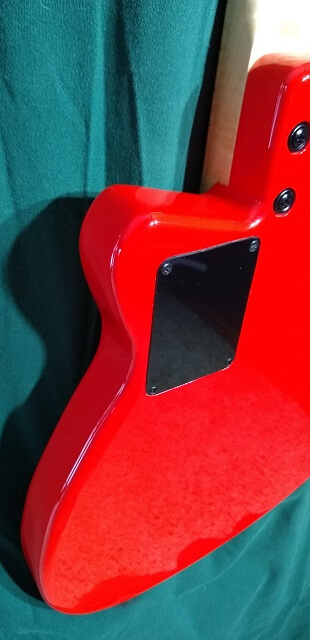
This photo makes it look like there's something wrong with the finish. It's actually the room carpet reflecting in the shine.
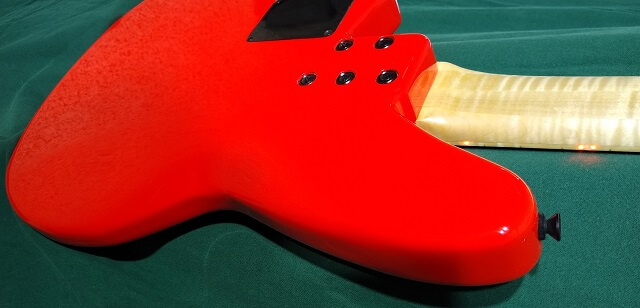
I'm kind of a sucker for offset body shapes.
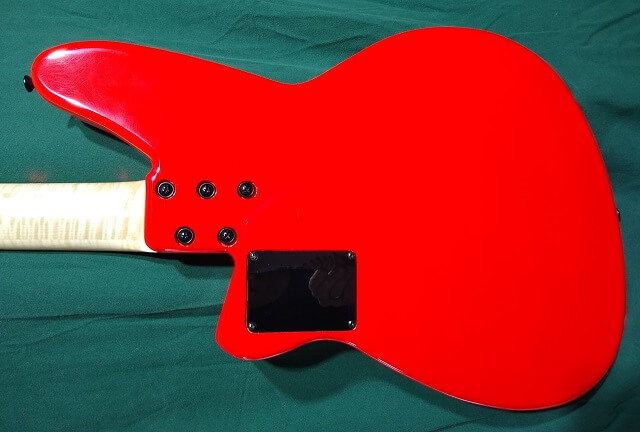
A few hours after I finished the instrument the Tundra Boy played it live during our Saturday night church service.
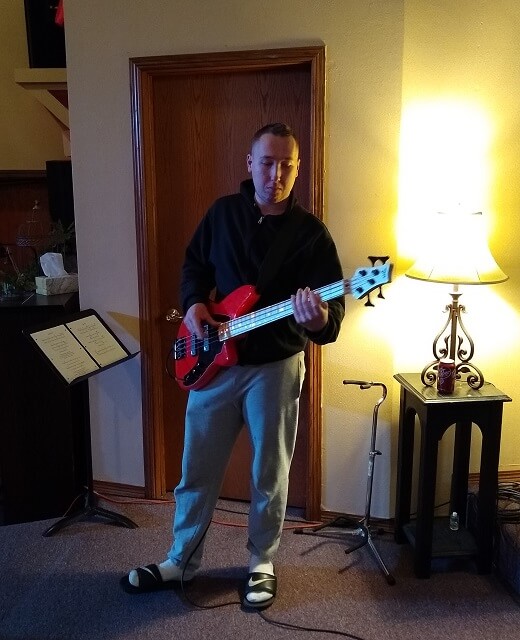
Curious how I built this guitar? Check out the construction photos here.
Return To The Main Music Gallery
This page last updated on 11/17/2020



